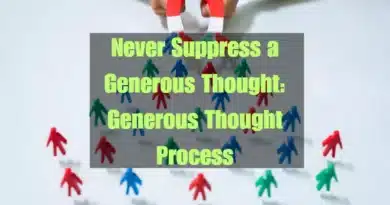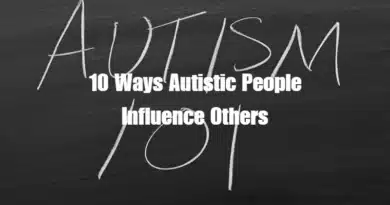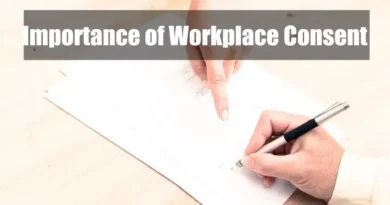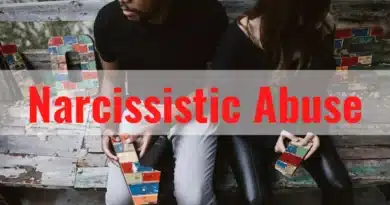Explaining 24 Red Flags in Teenage Relationships
Takeaways
| Red Flag | Why it’s a Red Flag | Relevance in Teenage Relationships |
|---|---|---|
| Jealousy | Indicates deep-seated insecurities and control issues. | Teens struggle with self-esteem and emotional regulation. |
| Extreme Irritability or Anger | Can lead to verbal or physical abuse. | Teens lack effective coping mechanisms for stress. |
| Isolation from Friends and Family | Partner attempting to control social interactions. | Teens may be more susceptible to isolation due to emotional intensity. |
| Controlling Behavior | Undermines autonomy and can lead to abuse. | Teens might not recognize controlling behaviors as harmful. |
| Invasions of Privacy | Indicates a lack of trust and respect. | Teens are developing their sense of boundaries. |
| Social Isolation | Cuts off support networks, making abuse easier to go unchecked. | Social circles are crucial for teens, and isolation impacts mental health. |
| Makes Excuses for Perpetrator’s Behaviors | Normalization of abuse, leading to victimization. | Teens might rationalize negative behaviors due to fear or judgment. |
| Physical Abuse | Clear indicator of an unsafe relationship. | Teens might not report abuse due to fear or misunderstanding. |
| Unusual Moodiness | Signals emotional turmoil caused by unhealthy relationships. | Emotional volatility is common, but significant changes need examination. |
| Changes in Behavior | Can signal stress or distress within the relationship. | Changes can impact overall well-being. |
| Communication Problems | Leads to misunderstandings, conflicts, and emotional distance. | Effective communication is still developing, making miscommunication common. |
| Extreme Changes in Eating Habits | Reflects stress, anxiety, or depression linked to relationship issues. | Teens might use food as a coping mechanism for stress. |
| Sleep Problems | Indicates emotional distress and has long-term health impacts. | Stressful relationships disrupt sleep patterns, affecting health and academics. |
| Substance Abuse | Coping mechanism for dealing with relationship stress or abuse. | Teens prone to experimenting with substances, exacerbating issues. |
| Verbal Abuse | Erodes self-esteem and leads to severe emotional trauma. | Teens may normalize verbal abuse due to lack of experience. |
| Unexplained Injuries | Can indicate physical abuse, often hidden due to fear or shame. | Teens may feel pressured to hide injuries. |
| A Possessive or Jealous Partner | Leads to controlling and abusive behaviors. | Teens might misinterpret possessiveness as affection. |
| Academic Decline | Reflects stress, distraction, or lack of support. | Relationship stress impacts focus and performance. |
| Bullying or Harassment | Leads to severe psychological harm and perpetuates abuse. | Teens may not recognize bullying as abusive. |
| Failing Grades | Indicates significant distractions or stress. | Relationship problems detract from academic focus. |
| Fear of Partner | Indicates an imbalance of power and potential for abuse. | Teens may fear partner due to threats or previous abuse. |
| Showing Up Unannounced | Lack of respect for boundaries, attempting to control partner. | Teens may not understand the importance of boundaries. |
| The Relationship Gets Serious Too Fast | Lacks mutual understanding and respect, increasing risk of unhealthy dynamics. | Teens might rush into serious relationships without considering consequences. |
| Changes in Physical Appearance | Indicates attempts to meet partner’s demands or cope with stress. | Teens may alter appearance to please partner or due to stress. |
Let’s discuss these red flags in detail:
Introduction
Navigating relationships during adolescence can be both exciting and challenging. As teenagers begin to explore romantic connections, it is vital to recognize the red flags that may indicate unhealthy dynamics.
By understanding these warning signs, teenagers, parents, and caregivers can foster healthier relationships and promote emotional well-being. This article will explore the 24 red flags in teenage relationships and provide valuable insights to create safer and more fulfilling connections.
24 Red Flags in Teenage Relationships
Recognizing the signs of an unhealthy teenage relationship is crucial for early intervention. By addressing these red flags promptly, individuals can prevent potential harm and foster positive growth. Here are several prevalent red flags to be mindful of:
1. Jealousy
Jealousy can indicate deep-seated insecurities and control issues, often leading to possessive and restrictive behaviors. Adolescents may struggle with self-esteem and emotional regulation, making jealousy more pronounced and potentially harmful.
2. Extreme Irritability or Anger
Frequent anger can lead to verbal or physical abuse, creating a hostile and unsafe relationship environment. Teenagers may not yet have developed effective coping mechanisms for stress, leading to heightened irritability.
3. Isolation from Friends and Family
Isolation can signal that a partner is attempting to control the social interactions of the other, increasing dependency. Teens may be more susceptible to isolation due to the intensity of their emotions and desire for approval.

4. Controlling Behavior
Controlling behavior undermines autonomy and can lead to an abusive dynamic. Adolescents may not recognize controlling behaviors as harmful, mistaking them for signs of care or love.
5. Invasions of Privacy
Privacy invasions like checking phones or social media accounts indicate a lack of trust and respect. Teens are still developing their sense of boundaries and may tolerate privacy invasions due to a lack of experience.
6. Social Isolation
Similar to isolation from friends and family, social isolation cuts off support networks, making it easier for abuse to go unchecked. Social circles are crucial for teens, and isolation can severely impact their mental health and development.
7. Makes Excuses for Perpetrator’s Behaviors
Making excuses can indicate the normalization of abuse, leading to a cycle of victimization. Teens might rationalize negative behaviors due to fear of social judgment or loss of the relationship.
8. Physical Abuse
Any form of physical violence is a clear indicator of an unsafe relationship. Teens might not report physical abuse due to fear, embarrassment, or misunderstanding of the severity.
9. Unusual Moodiness
Sudden mood changes can indicate emotional turmoil caused by an unhealthy relationship. Emotional volatility is common in adolescence, but significant changes warrant closer examination.
10. Changes in Behavior
Abrupt behavioral changes can signal stress or distress within the relationship. Teens are in a crucial developmental stage, and changes can impact their overall well-being.
11. Communication Problems
Poor communication can lead to misunderstandings, conflicts, and emotional distance. Effective communication is still developing in teens, making them more vulnerable to miscommunication and conflict.
12. Extreme Changes in Eating Habits
Changes in eating can reflect stress, anxiety, or depression, often linked to relationship issues. Teens might use food as a coping mechanism for relationship-related stress.
13. Sleep Problems
Sleep disturbances can indicate emotional distress and have long-term health impacts. Stressful relationships can disrupt sleep patterns, affecting teens’ overall health and academic performance.
14. Substance Abuse
Turning to substances can be a coping mechanism for dealing with relationship stress or abuse. Adolescents may be more prone to experimenting with substances, exacerbating relationship issues.
15. Verbal Abuse
Verbal abuse can erode self-esteem and lead to severe emotional trauma. Teens may normalize verbal abuse due to a lack of relationship experience and fear of social repercussions.
16. Unexplained Injuries
Unexplained injuries can indicate physical abuse, which is often hidden due to fear or shame. Teens may feel pressured to hide injuries to protect their abuser or due to embarrassment.
17. A Possessive or Jealous Partner
Possessiveness can lead to controlling and abusive behaviors, undermining personal freedom. Teens might misinterpret possessiveness as affection or commitment.
18. Academic Decline
Declining grades can reflect stress, distraction, or lack of support, often related to relationship issues. Relationship stress can significantly impact teens’ focus and academic performance.
19. Bullying or Harassment
Bullying within a relationship can lead to severe psychological harm and perpetuate a cycle of abuse. Teens may not recognize bullying behaviors as abusive, particularly in romantic contexts.

20. Failing Grades
Failing grades indicate significant distractions or stress, often stemming from unhealthy relationships. Relationship problems can detract from academic focus and performance.
21. Fear of Partner
Fear indicates an imbalance of power and potential for abuse, leading to a toxic relationship environment. Teens may fear their partner due to threats or previous abusive behaviors.
22. Showing Up Unannounced
This behavior can indicate a lack of respect for boundaries and an attempt to control or monitor the partner. Teens may not understand the importance of boundaries, making this behavior more prevalent.
23. The Relationship Gets Serious Too Fast
Rapidly escalating relationships can lack the foundation of mutual understanding and respect, increasing the risk of unhealthy dynamics. Teens might rush into serious relationships without considering the consequences.
24. Changes in Physical Appearance
Significant changes can indicate attempts to meet a partner’s demands or cope with stress. Teens may alter their appearance to please their partner or due to emotional stress.
Recognizing these red flags is crucial for fostering healthy relationships among teenagers and providing them with the support and guidance to navigate their formative years safely.
Tips for Addressing Red Flags in Teenage Relationships
- Communicate Openly: Encourage open discussions about feelings and behaviors with your teen.
- Educate on Healthy Relationships: Teach teens the hallmarks of respectful and supportive relationships.
- Set Boundaries: Help your teen establish and maintain personal boundaries.
- Monitor Social Interactions: Stay aware of who your teen spends time with and any changes in their social life.
- Promote Independence: Support your teen’s individuality and independence outside the relationship.
- Identify Manipulation: Educate your teen on recognizing and resisting manipulative behaviors.
- Encourage Friendships: Ensure your teen maintains friendships and family connections.
- Support Academic Focus: Encourage academic engagement and monitor for signs of decline.
- Address Abuse Immediately: Take immediate action if there are signs of verbal, emotional, or physical abuse.
- Foster Self-Esteem: Promote activities and environments that build your teen’s self-confidence.
- Seek Professional Help: If red flags persist, consider counseling or therapy for your teen.
- Be a Role Model: Demonstrate healthy relationship behaviors in your own interactions.
FAQ
What should I do if I notice red flags in my teenager’s relationship?
If you notice red flags in your teenager’s relationship, it is crucial to approach the situation with sensitivity and open communication. Start by expressing your concerns and observations in a non-judgmental manner. Encourage your teenager to reflect on their feelings and experiences, and offer support and guidance as they navigate their relationships.
How can I talk to my teenager about red flags without sounding controlling?
When discussing red flags with your teenager, it is crucial to approach the conversation with empathy and respect. Avoid sounding controlling by using “I” statements to express your concerns and focusing on the behaviors or actions you have observed. Encourage your teenager to share their thoughts and feelings and validate their experiences. Remember to offer guidance rather than imposing your opinions.
What are some signs that my teenager may be in an abusive relationship?
Indications that your teenager may be in an abusive relationship encompass abrupt shifts in behavior or temperament, inexplicable injuries, persistent apprehension or unease, seclusion from loved ones, and an abundance of secrecy regarding the relationship. Additionally, if your teenager’s partner exhibits controlling or manipulative behaviors, it is crucial to be vigilant and address the situation promptly.
How can I support my teenager if they are in an unhealthy relationship?
If your teenager is in an unhealthy relationship, providing unconditional support and creating a safe space for open communication is crucial. Encourage your teenager to express their feelings without judgment and offer resources such as counseling or support groups. Help them develop a safety plan to end the relationship, and involve trusted adults or professionals if necessary.
Are red flags in teenage relationships always indicative of abuse?
While red flags in teenage relationships may not always indicate abuse, they are warning signs you should not ignore. Even if the relationship does not escalate to physical violence, unhealthy dynamics can significantly impact a teenager’s emotional well-being and future relationships. Addressing and working through these red flags is vital to promote healthier connections.
How can teenagers recognize their red flags in relationships?
Teenagers can recognize their relationship red flags by reflecting on their feelings, behaviors, and experiences. Constantly feeling anxious, fearful, or controlled may indicate an unhealthy relationship. Being aware of their boundaries, communicating assertively, and seeking support from trusted adults or friends can help teenagers navigate healthy relationships.
Conclusion
Identifying red flags in teenage relationships is essential for promoting healthy connections and preventing potential harm. Teenagers, parents, and caregivers can create a safe and supportive environment by being vigilant and open to relationship conversations.
Remember to trust your instincts and seek help or guidance when necessary. Together, we can empower teenagers to cultivate healthy relationships that contribute to their well-being.










Comments are closed.